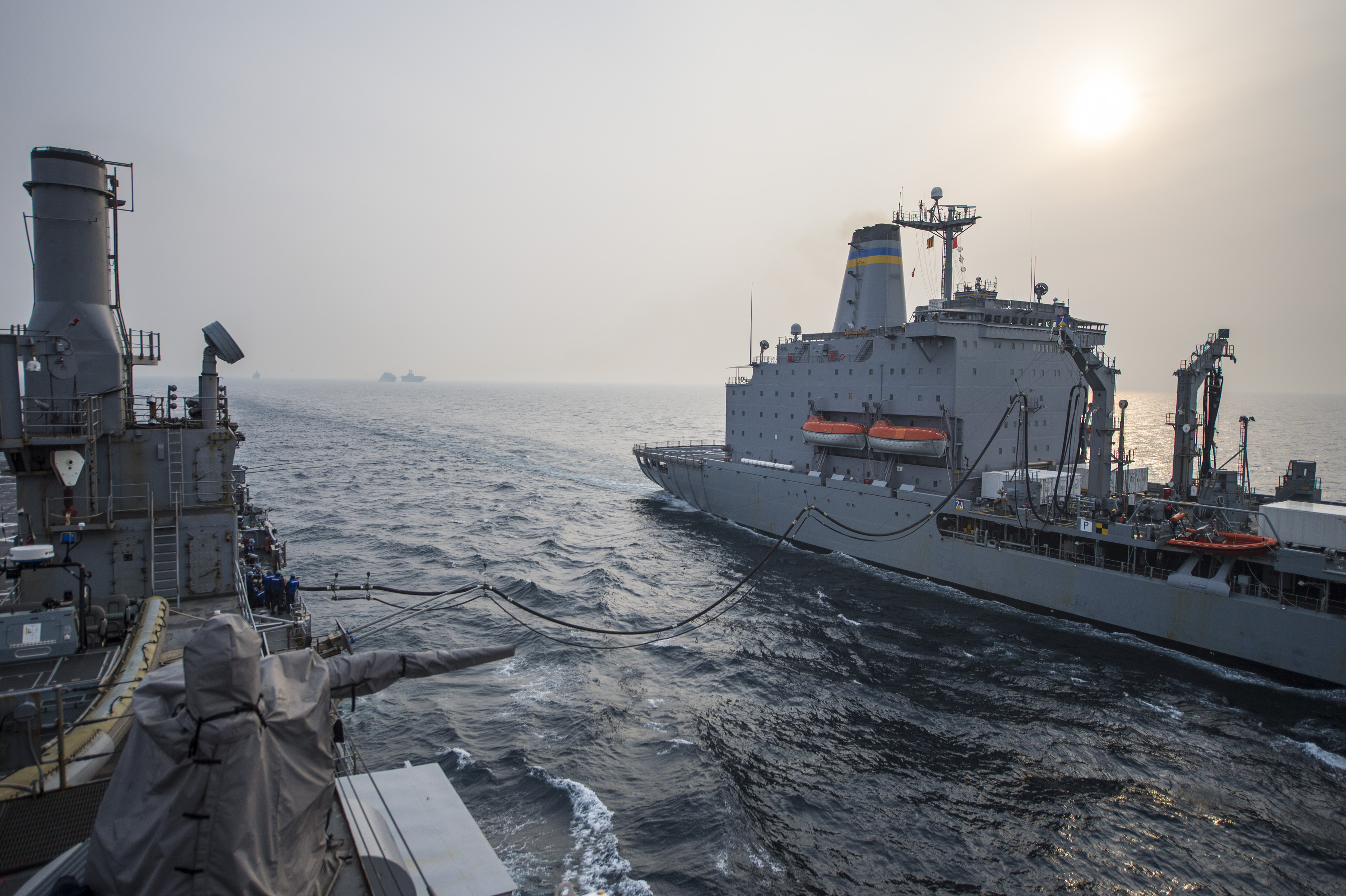
Storage and the ability to move energy from “one platform to another,” be it to a laser weapon or a rail gun as a package or payload is “the holy grail” and the “critical piece” in the sea services’ efforts in looking at energy for future operations, the Navy’s senior officer for fleet readiness and logistics said on Monday.
Vice Adm. Philip Cullom, speaking at the Navy League’s Sea-Air-Space 2014 exhibition on Monday, said “75 percent of the energy” the Navy consumes “is on the operational side.”
With the re-balancing to the Pacific and “its tyranny of distance” and “taking significant amounts of time [and energy] to get from place to place,” he said the Navy has to meet a challenge of providing “more presence with less energy … reducing supply chain vulnerability” while mitigating energy demand and applying it in new ways.
“We’re not [always] going to have that oiler over our shoulder,” in operations especially in the Pacific, he said in identifying the Navy’s work in hybrid electric drive. It is also looking to 3-D printing to make spare parts.
Lt. Gen. William Faulkner, U.S. Marine Corps deputy commandant for installations and logistics, said, “We have to lessen demand,” starting now.
“We can’t use platforms to move large amounts of water and fuel and be agile.” It also means realizing “most fuel [consumed] in tactical vehicles is burned when they are at idle” and changing that approach.
He added this May the Marine Corps will be running an Experimental Forward Operating Base exercise at Camp Pendleton, Calif., designed to identify ways to reduce fuel and battery requirements while generating more power.
At its camps, Faulkner said the Marine Corps is now producing 40 megawatts of electricity that “hold down costs and provides more energy” for persons living and working there.
“We’re looking for a higher level of independence” from non-military energy suppliers just in case those sources are cut off,” he said.
Vice Adm. William French, commander of Navy Installation Command, said, “Our energy reduction effort is just about keep pace” with rising kilowatt costs. He said the Navy is especially searching for ways to hold down energy on its island bases. He cited work the Navy is doing in solar power Hawaii, Guam and Guantanamo Bay, Cuba.
Advanced metering of time and amount of usage “give us the tools to do the analysis” of “how do we become smarter” [and] “when do we turn on the lights” in offices and “when do we turn on the cash registers” in the exchanges. He also said “mock billing” alerts residents in how they can conserve energy by showing patterns of consumption.
Rear Adm. Ronald Rabago, Coast Guard assistant commandant for engineering and logistics, said, his service has been paying attention to how much energy its cutters are using in port and trying to reduce that cost and plow the savings back into operations. “We’re hitting all our goals” in both areas.
“There has to be a forcing mechanism in holding commanders and small unit leaders accountable” for energy usage in the field, Faulkner said.
“We’re going to need industry’s help,” French said to continue looking for new affordable technologies, best practices and means to improve energy security.
“We need new ways of thinking about security,” Dennis McGinn, assistant secretary of the Navy for environment, said. “Energy touches everything we do.” It can be “a strategic asset or liability.”
“Energy security is a full contact sport,” Cullom added. “It is time to think. We have to be innovative.”
It also means working inside the Defense Department, other federal agencies and with the private sector and academia to “truly create win, win, win partnerships,” McGinn added.





